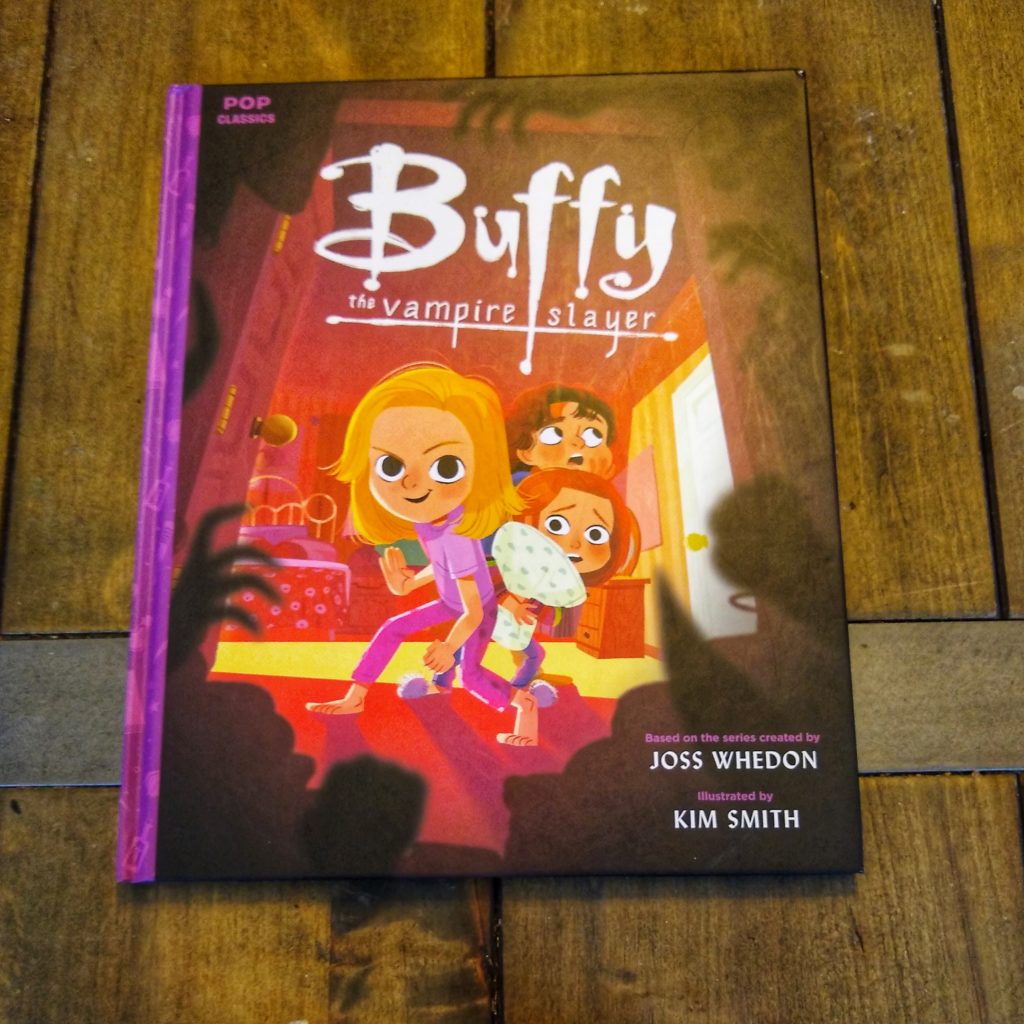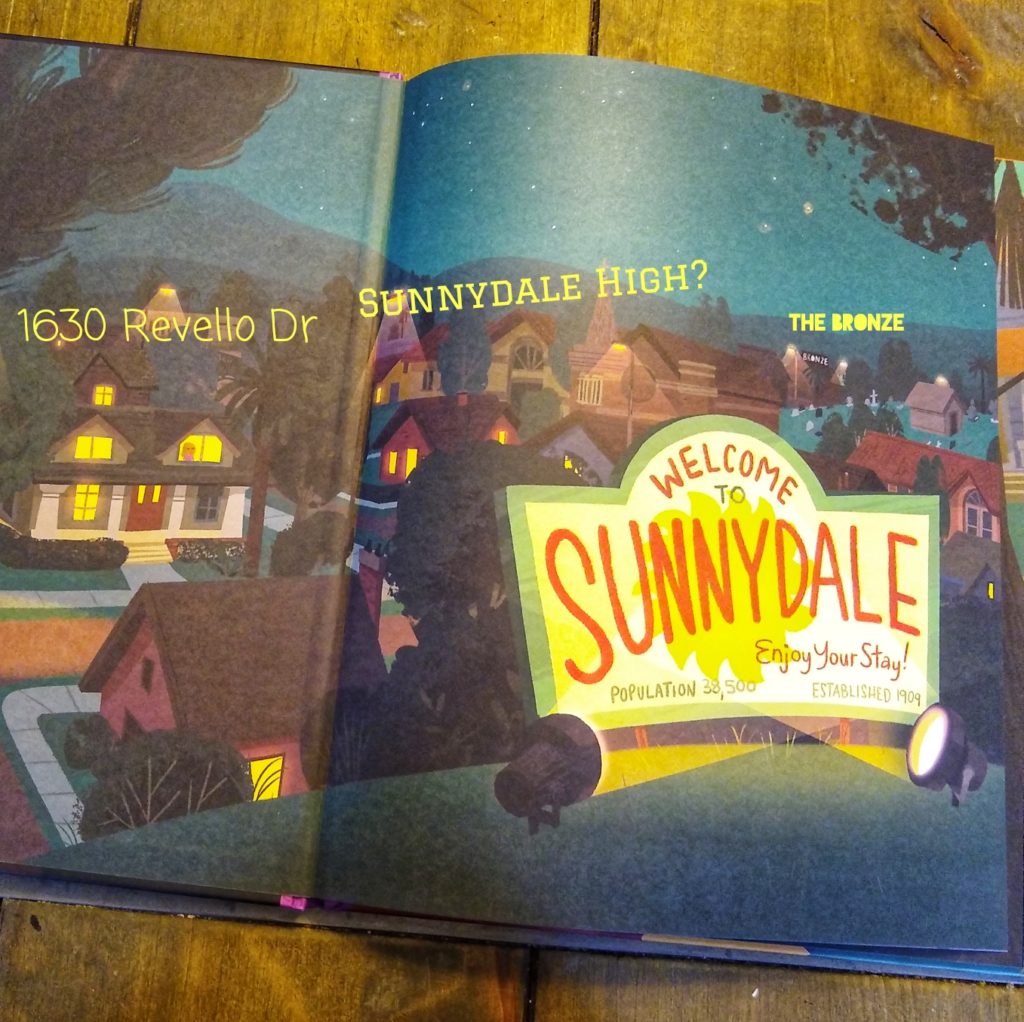
📖 Currently reading How to Be Everything by Emilie Wapnick 📚

📖 Currently reading How to Be Everything by Emilie Wapnick 📚

📖 Currently reading: The Starless Sea by Erin Morgenstern 📚
📚 Gee, J. P. (2004). Situated Language and Learning : A Critique of Traditional Schooling. London, United Kingdom: Routledge.
Gee introduces the concept of affinity spaces in this book, pointing out that popular culture is ahead of schools in the construction of “specially designed spaces (physical and virtual) constructed to resource people tied together, not primarily via shared culture, gender, race, or class, but by a shared interest or endeavor” (2004, p. 4). He argues that “people learn best when their learning is part of a highly motivated engagement with social practices which they value” (Gee, 2004, p. 77) and offers affinity spaces as an example of a space that facilitates this kind of engagement.
Gee contrasts affinity spaces with communities of practice as proposed by Lave and Wenger (1991), arguing that defining a community implies labeling a group of people, including determining “which people are in and which are out of the group, how far they are in or out, and when they are in and out” (Gee, 2004, p. 78). Talking about spaces instead of communities removes this concern of membership; people who are present in a space may or may not be part of a community.
Gee identifies some key components of any space, not just an affinity space: content, generators, content organization, interactional organization, and portals. Content is what the space is “about,” and is provided by content generators. Gee uses the example of a video game, which generates a variety of content (words, images, etc.). The space is then organized in two different ways: content is organized by the designers, whereas interaction is organized by the people interacting with the space, in how they “organize their thoughts, beliefs, values, actions, and social actions” (Gee, 2004, p. 81) in relationship to the content. This interaction creates a set of social practices and typical identities present in the space. The content necessarily influences the interaction, but interaction can also influence content. For example, with a video game, player reactions to the game may influence future updates to the game. Finally, Gee defines portals as “anything that gives access to the content and to ways of interacting with that content, by oneself or with other people” (Gee, 2004, p. 81). In Gee’s video game example, this could be the game itself, but it could also be fan websites related to the game. Portals can become generators, “if they allow people to add to content or change the content other generators have generated” (Gee, 2004, p. 82). A video game website might include additional maps that players can download and use to play the game or offer recordings of gameplay to serve as tutorials or entertainment. A generator can also be a portal; for the video game example, the game disc or files both offer the content and can be used to interact with the content.
Gee builds on this description of a space to describe “affinity spaces,” a particular type of space that young people today experience often. The “affinity” to which Gee refers is not primarily for the other people in the space, but for “the endeavor or interest around which the space is organized” (Gee, 2004, p. 84). He defines an affinity space as a space that has a number of features:
“Common endeavor, not race, class, gender, or disability, is primary” (Gee, 2004, p. 85). People in the affinity space relate to each other based on common interests, while attributes such as race, class, gender, and disability may be used strategically if people choose.
“Newbies and masters and everyone else share common space” (Gee, 2004, p. 85). People with varying skill levels and depth of interest share a single space, getting different things out of the space in accordance with their own purposes.
“Some portals are strong generators” (Gee, 2004, p. 85). People can create new content related to the original content and share it in the space.
“Content organization is transformed by interactional organization”(Gee, 2004, p. 85). Creators of the original content modify it based on the interactions of the people in the space.
“Both intensive and extensive knowledge are encouraged” (Gee, 2004, p. 85). Specialized knowledge in a particular area is encouraged (intensive knowledge), but the space also encourages people to develop a broad range of less specialized knowledge (extensive knowledge).
“Both individual and distributed knowledge are encouraged” (Gee, 2004, p. 86). People are encouraged to store knowledge in their own heads, but also to use knowledge stored elsewhere, including in other people, materials, or devices, using a network of people and information to access knowledge.
“Dispersed knowledge is encouraged” (Gee, 2004, p. 86). One portal in the space encourages people to leverage knowledge gained from other portals or other spaces.
“Tacit knowledge is encouraged and honored” (Gee, 2004, p. 86). People can use knowledge that they have built up “but may not be able to explicate fully in words” (Gee, 2004, p. 86) in the space.
“There are many different forms and routes to participation” (Gee, 2004, p. 87). People can participate in different ways and at different levels.
“There are lots of different routes to status” (Gee, 2004, p. 87). People can gain status by being good at different things or participating in different activities.
“Leadership is porous and leaders are resources” (Gee, 2004, p. 87). No one is the boss of anyone else; people can lead by being designers, providing resources, or teaching others how to operate in the space. “They don’t and can’t order people around or create rigid, unchanging, and impregnable hierarchies” (Gee, 2004, p. 87).
Gee argues that as young people encounter more and more affinity spaces, they see a “vision of learning, affiliation, and identity” that is more powerful than what they see in school (Gee, 2004, p. 89).
Gee, J. P. (2004). Situated Language and Learning : A Critique of Traditional Schooling. London, UNITED KINGDOM: Routledge.
Lave, J., & Wenger, E. (1991). Situated learning: Legitimate peripheral participation. ; New York: Cambridge University Press.
📚 Ito, M., Martin, C., Pfister, R. C., Rafalow, M. H., Salen, K., & Wortman, A. (2019). Affinity Online: How Connection and Shared Interest Fuel Learning. New York: NYU Press.
Ito et al describe the ways in which online affinity networks can be conducive to Connected Learning, explicating an updated model of Connected Learning in the process. This book is the output of the Leveling Up study; it is a collaboratively authored text identifying themes that were shared across multiple ethnographic studies in a variety of online affinity network contexts.
Connected learning “both describes a form of meaningful and opportunity-enhancing learning and guides design and policies that expand access to this form of learning” (p. 3).
It “is centered on young people’s interest-driven learning and is agnostic as to the types of relationships and institutions that can support this learning” (p. 3).
Some of the questions they seek to answer:
“How do relationships and networks provide social support, information, and connections to opportunity?... What kinds of relationships and networks support connected learning? Can online affinity networks help develop social capital, learning, and opportunity?...what kinds of additional relationships and supports do young people need to connect their learning in affinity networks to academic, civic, and career opportunities?” (p. 4)“Why do some young people go online primarily to hang out with existing peers and to browse entertaining YouTube videos, while others dive into online tutorials, courses, and communities of interest that drive more specialized forms of ‘geeking out’ and social organizing? What role can educators, parents, peers, and the developers of online resources play in shaping these dynamics? What kinds of institutional practices, policies, and infrastructures can build stronger connections between youth interests and sites of opportunity, particularly for less privileged groups? What kinds of cultural barriers and assumptions inhibit or facilitate the building of these connections?” (p. 7-8)
How do online affinity networks connect to educational, career, and civic opportunity?
While educational technology (“edtech”), and especially specific edtech tools, have both proponents and detractors, their approaches fail to consider that “Technologies and techniques…. Take on different characteristics depending on the cultural and social settings they are embedded in” (p. 6). Without attention to the cultural and social environment, new technologies “tend to amplify existing inequity” (p. 6).
“...access to social, cultural, and economic capital, not access to technology, is what broadens opportunity.” (p. 6) (emphasis original)
A history of this work: The Macarthur Foundation’s Digital Media and Learning Initiative funded research conducted by, among others, members of the Connected Learning Research Network.
One of these projects was the Digital Youth Project. Fieldwork for this project was undertaken in 2006 - 2007, when “teens were flocking to MySpace… YouTube was just taking off… before the mobile internet and texting had taken hold in the United States” (p. 8).
The output of that project was the book Hanging Out, Messing Around, and Geeking Out: Kids Living and Learning with New Media (Ito et al 2009). The model described in that book was designed to describe how children and teens interact with new media, but “was not designed to directly inform educational practice or design” (p. 9).
Affinity Online is an output of the Leveling Up project, another project of the CLRN. Contrasting with HOMAGO, Affinity Online is explicitly designed to inform “the design and deployment of learning technologies and related programs” (p. 10). The project came about because “…large-scale adoption of new media created an imperative to investigate the potential connections between young people’s online activities and meaningful opportunities in education, civic institutions, and careers” (p. 10).
“Critique of existing practices is necessary but not sufficient; we believe that those of us practicing ethnography and social science also have a role to play in presenting alternatives.” (p. 10)
This text provides a “cross-case analysis of in-depth qualitative research in networked settings” (p. 12), specifically “a variety of affinity networks that make use of online spaces” (p. 13). Data collection methods include “questionnaires, surveys, semistructured interviews, observation, and content analysis of media, profiles, videos, and other online artifacts” (p. 13).
Networks were chosen by seeking out “examples of practices already existing in communities that can be spread and scaled to address systemic problems” (p. 14), an approach from the public health field called “positive deviance” (Pascale, Sternin, and Sternin 2010).
Ito et al identify common characteristics of online affinity networks that support connected learning:
“…an interest cannot be separated from its culture, people, and places.” (p. 18)
“Connected learning is not limited… to a particular pedagogical approach… the focus is on building relational, practical, and conceptual connections across settings and experiences, centered on learning interests and affinities.” (p. 19)“…connected learning is more appropriately conceived of as the growth of a network of connections than as a linear pathway or an internalization of skills and knowledge” (p. 21)
“Transformative and resilient forms of learning are embedded in a web of social relations, meaningful projects, and shared activities with which a learner feels a sense of affinity” (p. 166)
“We see connected learning not as a journey of individual development that is transferrable across different settings that a person moves through, but as building stronger, more resilient and diverse social, cultural, and institutional relationships through time” (p. 167)
This idea of network-building as opposed to pathway-traversing is similar to the contrast Martin (2012) draws between traditional, linear models of information literacy and her new, more networked model of information literacy. It also has implications for people who are trying to identify pathways to connected learning, such as Bender & Peppler (2019). Should people asking questions like Bender & Peppler’s be investigating networks rather than pathways?
KEY FINDING: Online affinity networks rarely overlap with school or local networks or career networks.
“Building these connections requires concrete forms of sponsorship, translation, and brokering in order t oconnect interests to opportunity.” (p. 167-168)
“When we consider the resources and supports that young people need to connect their interests to their opportunity, equity becomes of critical concern.” (p. 168) Youth need programs and mentors with social capital to broker connections; if brokering is treated as a market-driven process, this exacerbates inequity.
“The responsibility of providing mentorship, brokering, and connection bulilding to link youth interests to opportunity is a collective one and cannot be shouldered only by families, nor only by schools and other public educational insitiututions. It entails a broader cultural shift toward recognizing the new learning dynamics of a networked era, paying more attention to learning and equity in online communities and platforms, and providing more educational supports in both formal and informal learning environments.” (p. 169
Barriers to “having a shared understanding and public agenda for how the adult world can harness online affinity networks for educational opportunity and equity” (p. 171) include the Digital Culture Generation Gap and Compartmentalized Social Networks.
Re: the Digital Culture Generation gap - “lack of understanding and visibility around what digital youth culture is about” (p. 172) and “cultural values and negative stereotypes” - e.g. gaming and fandom in particular are stereotyped as addicitvie and frivolous, respectively.
Re: Compartmentalized Social Netowrks - “online affinity networks can support bonding social captiial, but they have few avenues for bridging social capital between onlien relationships and local ones, limiting connections to academic, career, and civic opportunity” (p. 173).
Design Principles for creating Connected Learning Environments/Experiences:
Shared culture and purpose
“In learning environments that are less interest-driven [esp. Schools], it is more challenging to develop this sense of shared community values, culture, and purpose” (p. 176). Schools tend to foster this more in extracurriculars and electives. These activities offer a potential site of connection between online affinity networks and local networks.
Project-based and production-centered
Openly networked
Most people who know me know that the TV show Buffy the Vampire Slayer is one of my favorite things. It has been the dominant pop culture text in my life for almost 20 years, so of course my husband bought our son the BtVS picture book for his second birthday.

We read it for the first time a few nights ago, and, y’all, this is done so lovingly, I almost cried. If you love BtVS and you like picture books, pick this one up.
The plot is simple. This is, let’s say, an AU where Buffy lived in Sunnydale when she was in elementary school. Don’t think about canon too hard. The writers of the show didn’t, so we probably shouldn’t, either. Sixteen year old Buffy introduces herself at the beginning, then sends us in a flashback to when she was eight years old and afraid of the dark, because OF COURSE there is a monster in her closet.
And you know how BtVS is all about literalizing tropes, so… She’s not wrong. She recruits Willow, Xander, and Giles to help her with the problem, and of course through the power of friendship it all works out.
But where the whole thing shines is the little touches in the illustration. Each time I read it, I find a new BtVS easter egg. I don’t want to spoil too much, so here are just a couple examples.
Below, I’ve noted a few special Sunnydale locations in the front endpapers in yellow.

Next, a few things worth noticing in Buffy’s room, this time in blue:

And this is just the beginning. Each page has tons of this stuff, and the book’s climax has the best references of all.
Right before the climax, though, we get this page:

And really, isn’t stepping into the darkness together what BtVS is all about?
🔖📚 No Romance Required 30 Books About Girl – Boy Friendships
Me: “Okay but everyone wants to marry Dickon so they must mean the friendship between Mary and Colin right? I think even Colin wants to marry Dickon.” (Reader: I married Dickon.)
Want to read: The Design of Childhood: How the Material World Shapes Independent Kids by Alexandra Lange 📚
This review was written for my children's literature class, so it addresses some concerns from a more professional perspective than many of my earlier reviews have.
Miller, R. H. (2006). Stan Lee: Creator of Spider-Man. Farmington Hills, MI: KidHaven Press.
Stan Lee: Creator of Spider-Man is part of the KidHaven Press Inventors and Creators series, a series which introduces the lives of famous people to middle grade readers (Grades 4 - 8). The author, Raymond H. Miller, has written over 50 children’s nonfiction titles on various topics. While he is not an accredited Stan Lee expert, his experience in writing this type of book lends him some authority. The text, published in 2006, covers Stan Lee’s life from his birth until the 2000s, with up-to-date information about his current work. It focuses primarily on his career; sections about his childhood slant heavily towards how his childhood experiences influenced that career.
The book is clearly designed to provide an introduction to the life of one of the most famous writers in the history of comic books. The text is not overly complex, but it is not so simplistic as to bore or insult the intelligence of its intended audience. It does not present differing perspectives on Stan Lee’s life; it does, however, report conflicts objectively, simply stating the facts of situations like Lee’s lawsuit against Marvel rather than taking one side or the other in these matters.
The structure of the book is chronological; chapter titles and subtitles break up the text but do not reveal a great deal about the content that follows them. The book includes extensive reference aids, including a table of contents, a glossary, an index, endnotes which provide citations for quotes used in the text, a page of “For Further Exploration” recommendations, and photo credits. These serve as excellent examples for readers if they need to write biographical texts themselves.
Illustrations include photographs of Stan Lee in various situations, images of his influences (such as William Shakespeare) and experiences (such as chess, ping pong, and the bombing of Pearl Harbor), and scenes from movies based on his films. These are colorful with clear captions which add to the text’s meaning. There is one confusing illustration, a combined map of Manhattan Island and timeline which features characters from Stan Lee’s comic books. The text on this image, in comic-style bursts, is arranged in no discernible order.
Overall, this book is well-suited to its audience and purpose. The text is clear, the presentation is attractive, and it is a fine example of well-researched non-fiction.
The Summer Blog Blast Tour is back and it kicks off today! Browse around for interviews with the following authors: